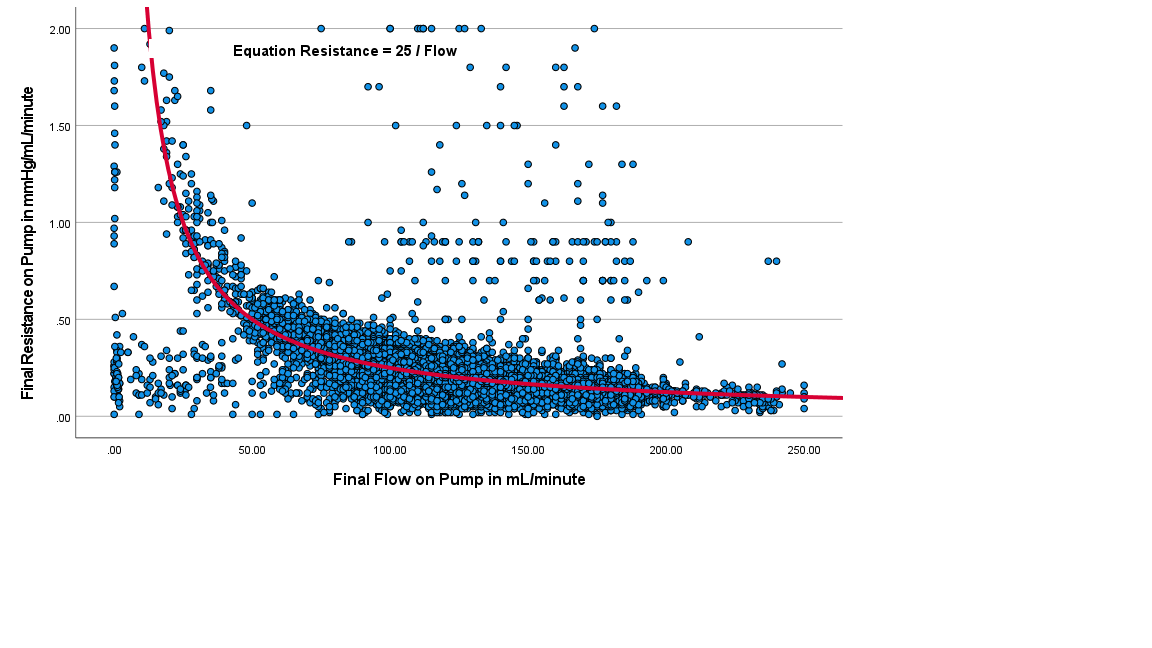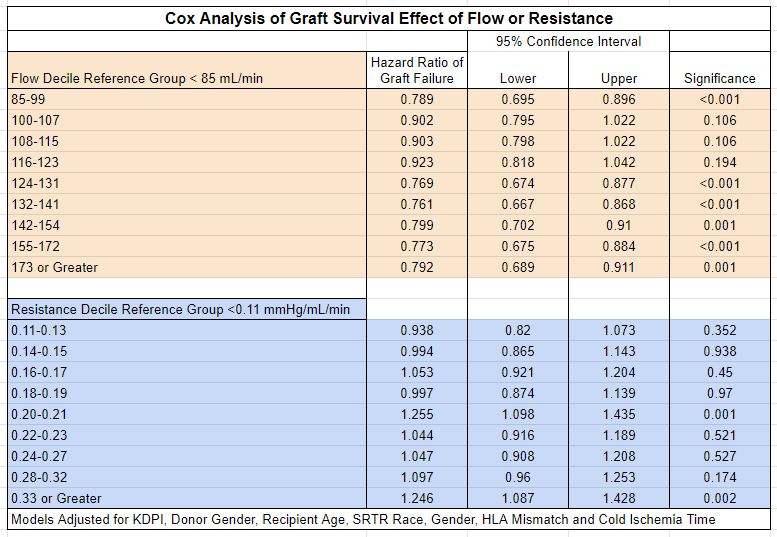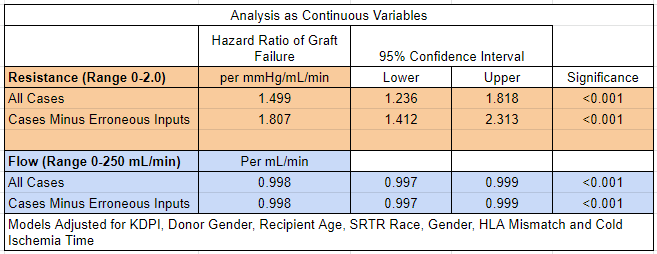Final Flow and Resistance During Cold Pulsatile Perfusion Preservation Do Have Value in Prediction of Deceased Donor Graft Survival After Adjusting for KDPI
Kidney Transplant, Sacred Heart Hospital, Pensacola, FL
Meeting: 2022 American Transplant Congress
Abstract number: 728
Keywords: Cadaveric organs, Graft survival, Kidney transplantation, Machine preservation
Topic: Clinical Science » Kidney » 32 - Kidney Deceased Donor Selection
Session Information
Session Name: Kidney Deceased Donor Selection
Session Type: Poster Abstract
Date: Saturday, June 4, 2022
Session Time: 5:30pm-7:00pm
 Presentation Time: 5:30pm-7:00pm
Presentation Time: 5:30pm-7:00pm
Location: Hynes Halls C & D
*Purpose: To determine whether cold pulsatile perfusion preservation (CPPP) parameters of flow and resistance provide additional data regarding deceased donor kidney graft survival after adjusting for KDPI.
*Methods: All deceased donor kidneys with donor age greater than 12 who received CPPP and who had data on final flow and resistance on CPPP were identified from 1/1/2010 until 9/2/2020. The KPDI 2020 was calculated for all the donors. Cox proportional hazard modeling of graft and death censored graft survival was used to determine the independent effect of final flow or resistance on outcomes.
*Results: Of the 41,559 deceased donor kidney transplants receiving CPPP in this time period. 25,141 had final pump flow and resistance data and were included in the study. Figure one shows the relationship between final flow and resistance.
As expected flow and resistance are inversely related. However, a number of outliers were present that did not fit the expected relationship and appear to be input errors in the data. Cox proportional hazard modeling for graft and death censored graft survival showed that flows in the highest 5 deciles correlated with improved graft survival while only the upper decile of resistance was associated with reduced graft survival.
When flow and resistance were analyzed as a continuous variables in the model, high resistances or low flows were more strongly correlated with graft survival. Subset analysis removing about 500 erroneous cases strengthen the effect of resistance.
*Conclusions: Extreme outliers of low flow and high resistance had an impact on graft survival after adjusting for KDPI and basic recipient characteristics. Donors with pump parameters that are highly abnormal with low flows (<75 mL/min.) and high resistance (>1.0 mmHg/mL/min.) should be transplanted with caution.
To cite this abstract in AMA style:
Keith DS, Lessmann E. Final Flow and Resistance During Cold Pulsatile Perfusion Preservation Do Have Value in Prediction of Deceased Donor Graft Survival After Adjusting for KDPI [abstract]. Am J Transplant. 2022; 22 (suppl 3). https://atcmeetingabstracts.com/abstract/final-flow-and-resistance-during-cold-pulsatile-perfusion-preservation-do-have-value-in-prediction-of-deceased-donor-graft-survival-after-adjusting-for-kdpi/. Accessed December 22, 2025.« Back to 2022 American Transplant Congress



